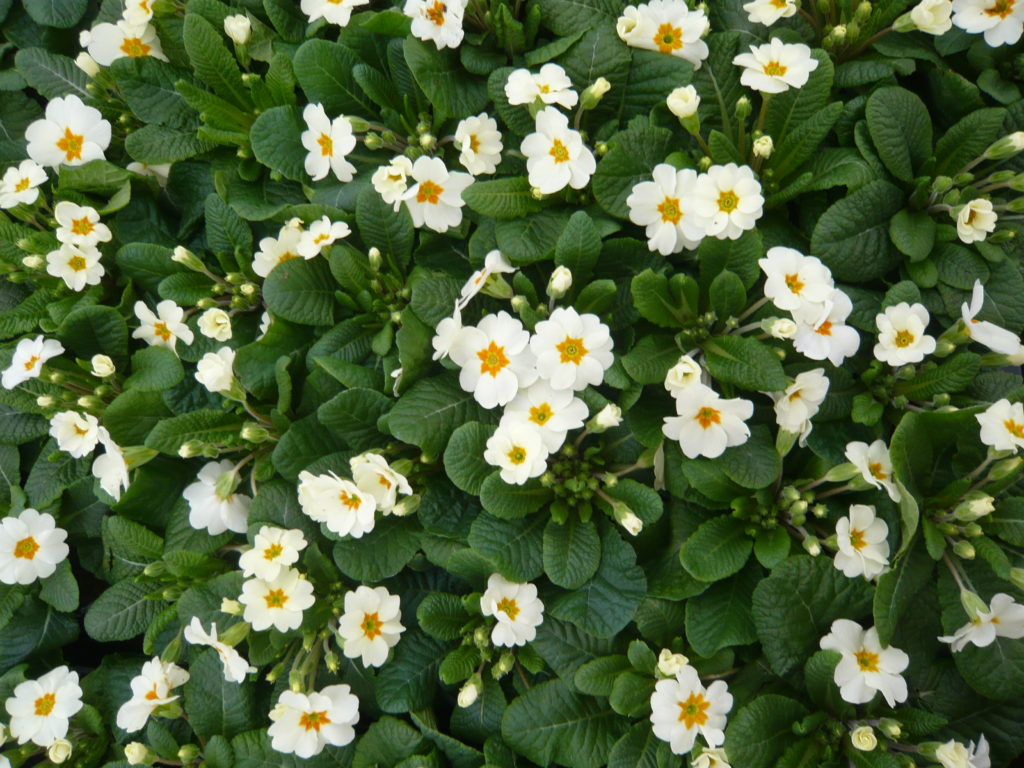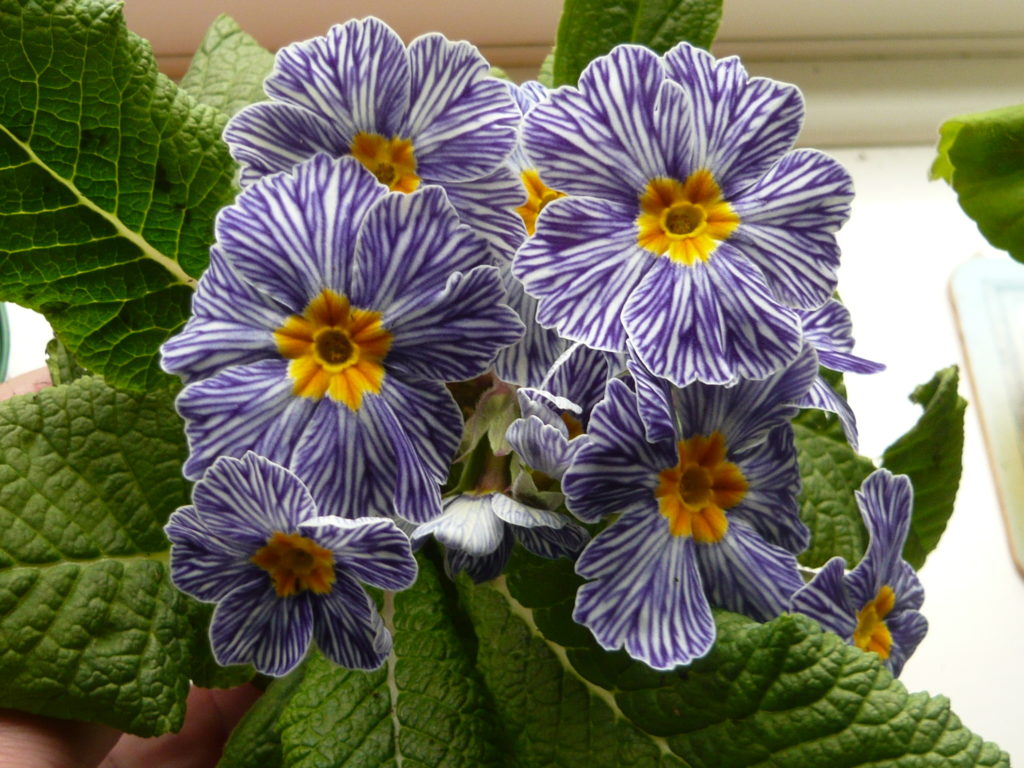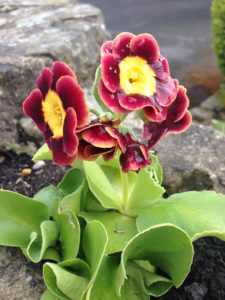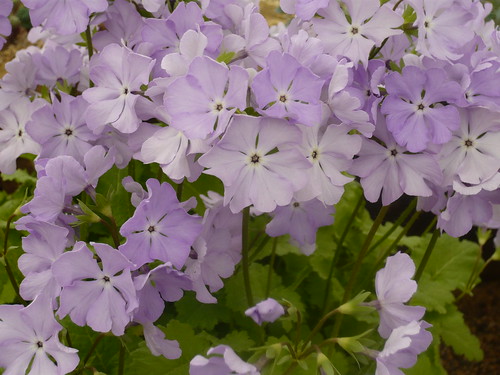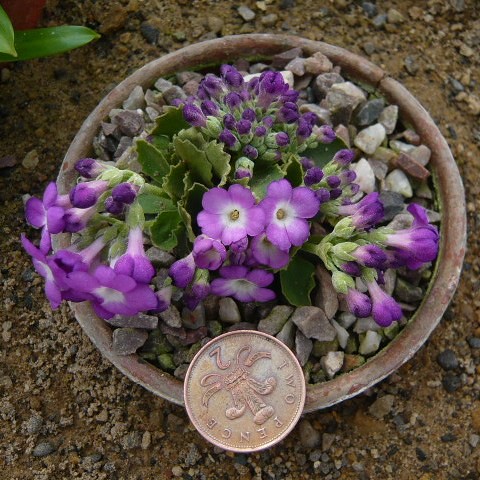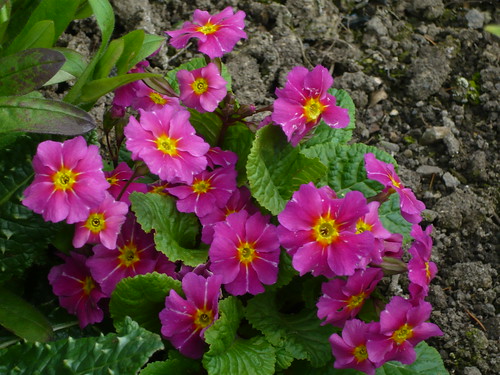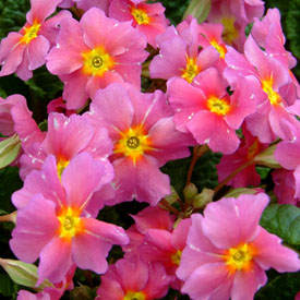This spring has been a good one for my Auriculas. I have been please with a powder blue flower that I hope to propagate by division in July. First I will water well and add some dilute feed.

These Alpine Auriculas look excellent when grown in 3 inch pots. The ‘Long Tom’ pots are silghtly taller than the traditional pot and are useful as Auricula tend to grow a ‘carrot root’ used to anchor the plant in the wild. Alpine Auriculas have either a golden yellow or cream centre surrounding the tube.
Show Auriculas are considered to be the star Auricula plants and must have a ring of dense Farina around the eye of the flower. Selfs (all one colour) and Edges including most stripes have an outside edge composed of leaf tissue such as the ‘Orlando’ a grey edged show Auricula. Green edges usually have larger flowers. Stripes have recently been reintroduced with Monmouth Star having red petals with yellow rays out to the flowers edge.
Double Auricula ‘Sibsey‘ is a blue to purple flower and can be found at Specialist grower Angus Auriculas. Doubles arise from mutations of border or garden Auriculas and were amongst the first novelties cultivated and shown. There is now an increasing number of doubles including striped doubles at NAPS shows. The Fantasia variety is deep maroon with white frosting a real eye-catcher

Border or Garden Auriculas have old names like Dusty Miller, Recklasses and Ricklers. Only a few have ‘Farina’ the white powder found on leaves and flowers that resembles flour or meal which is a must on Show Auriculas. Some are European primula hybrids and occasional are scented. Best grown in a position that gives them shade from midday sun. Water in very dry spells but plant in well drained soil. Ideal for partially shaded positions on rockeries or borders, or spring flower beds, pots, tubs
…
Read More Read More

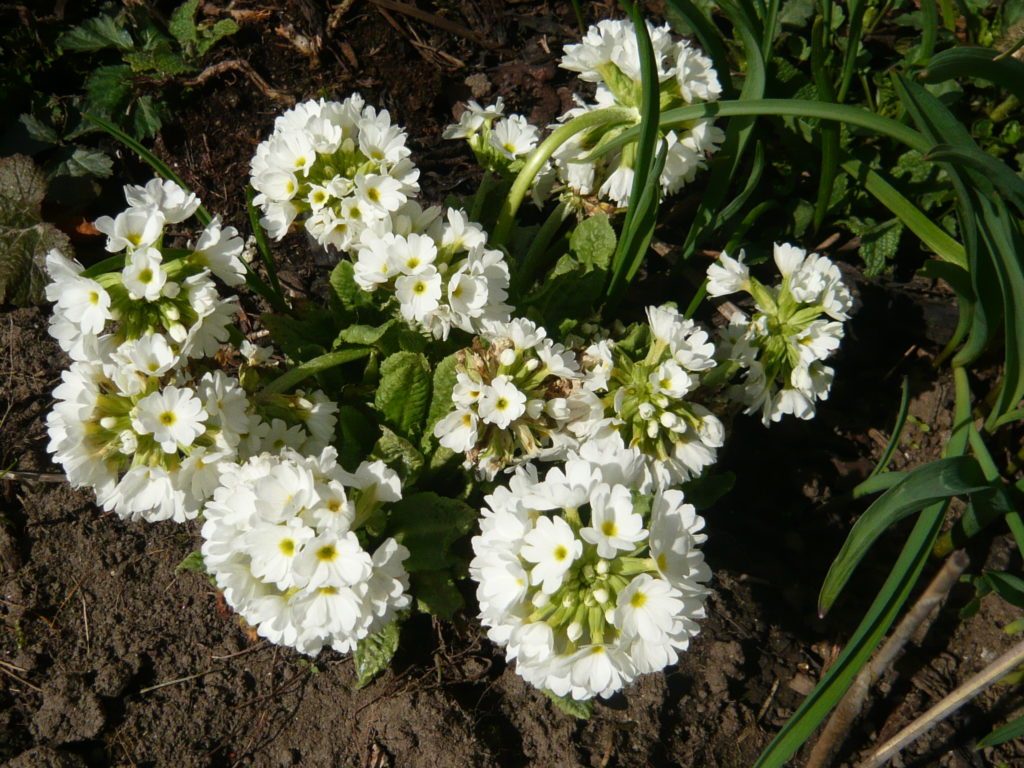
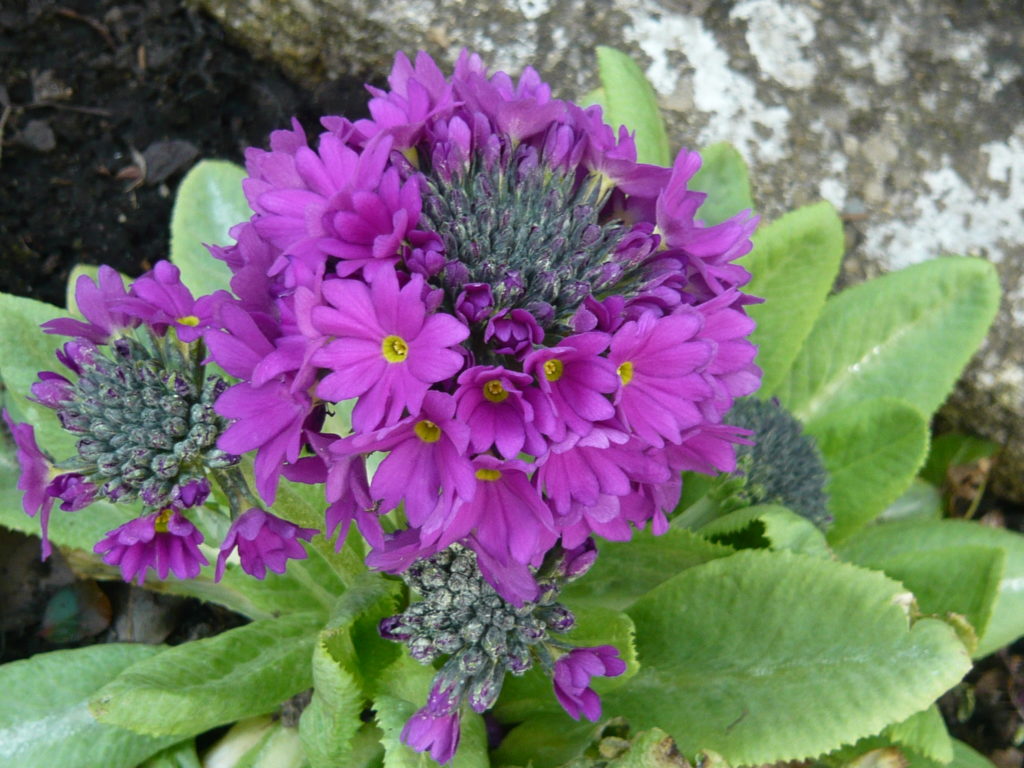

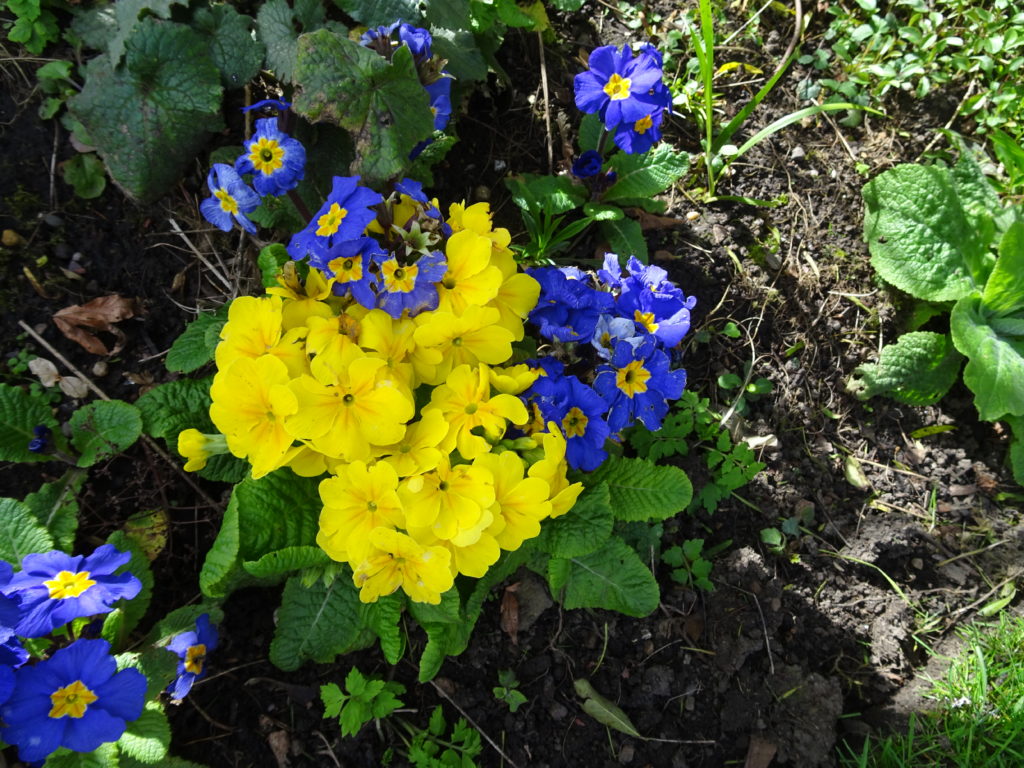 In some years different plants do better than others. In my garden this year is the spring for primulas and today’s crop shows off some of the strong colours that I have been enjoying. Notably the blues are deep and stand out due to the contrasting yellow eyes. Yes to quote our former speaker John Bercow ‘the eyes have it, the eyes have it’.
In some years different plants do better than others. In my garden this year is the spring for primulas and today’s crop shows off some of the strong colours that I have been enjoying. Notably the blues are deep and stand out due to the contrasting yellow eyes. Yes to quote our former speaker John Bercow ‘the eyes have it, the eyes have it’.
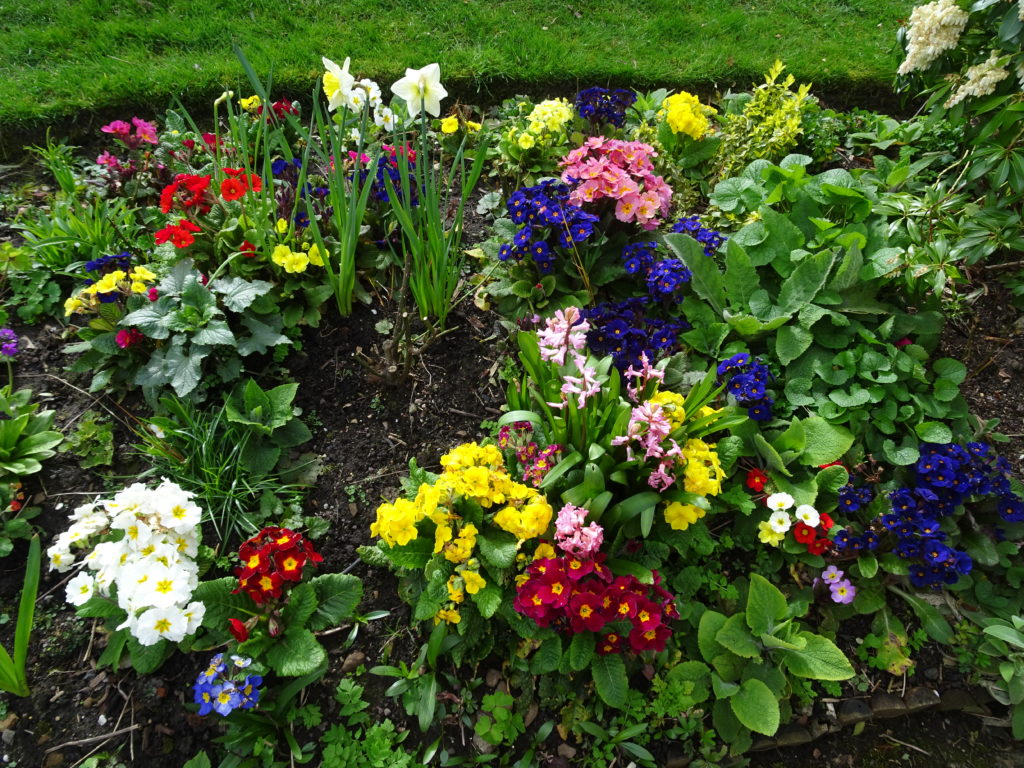
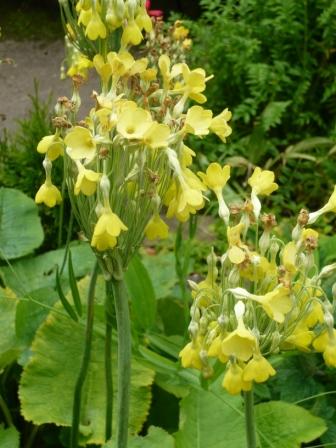 If I was starting a collection of plants for a bog garden or streamside I would look at a collection of different primula.
If I was starting a collection of plants for a bog garden or streamside I would look at a collection of different primula.
